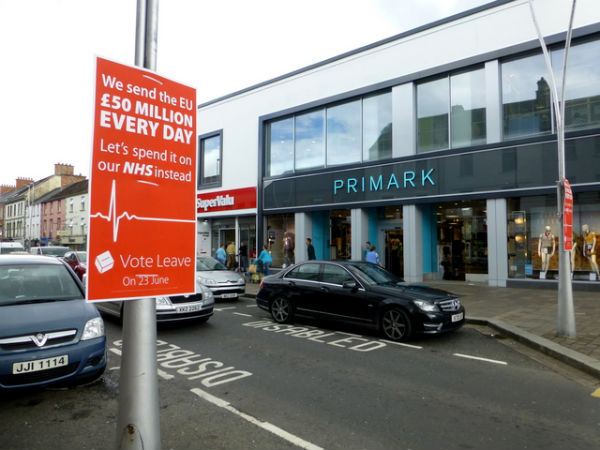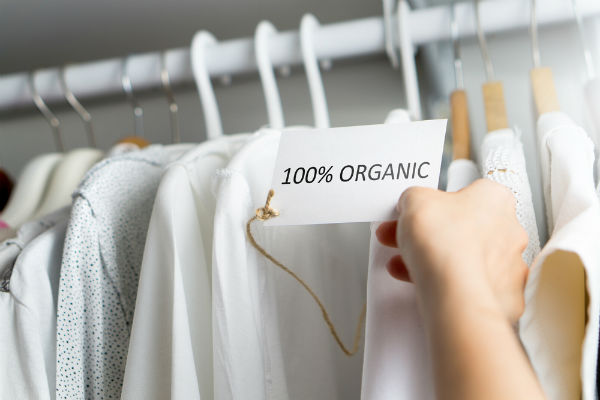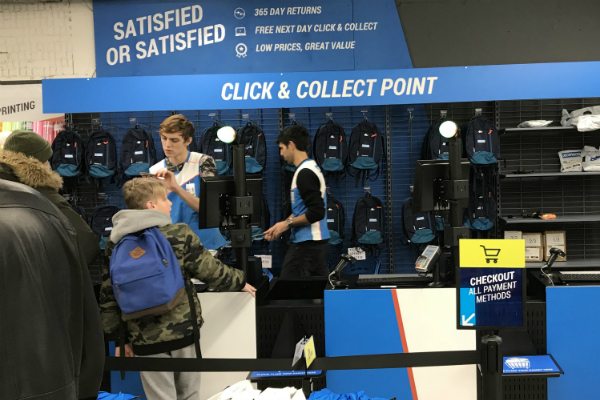The top three issues facing fashion retailers
– And what they can do about it
I am not sure there has ever been a more turbulent time for UK fashion retailers. From the uncertainty surrounding Brexit, to the growing awareness around sustainability concerns, throw in the ever-increasing pressure from online retailers and the changing influence of social media…and, well, fashion retailers are sailing through difficult waters. Let’s take a closer look.
Issue no. 1 – Brexit
Whichever side of the Brexit fence you sit on, it can be agreed that the current political situation has caused uncertainty and some challenges. UK Fashion is a world-leading powerhouse, but one that is made up of people from all over Europe and that benefits from the ease of trading with other EU countries. Perhaps leaving Europe will bring new benefits for trading with the US and other non-EU countries – time will tell – but the issue currently is the uncertainty surrounding what deal will be struck.

With the likelihood of a no-deal Brexit increasing, commentators explain that the UK will be subject to WTO trade rules where the EU adds duties of 11.5 per cent on imported clothes and 6.5 per cent on textiles. In addition, the British government might also impose a tariff on goods coming in to the UK. There could also be queues at the borders and delays in shipments caused by additional custom duties. The reality is no one really knows what Brexit will look like and what the implications will be, and this is the real issue. Uncertainty breeds fear (for retailers and shoppers) and an inability for retailers to properly plan, and it is this ultimately that is challenging the UK fashion industry.
Issue no. 2 – Sustainability
We hear about the ‘woke generation’ but I think awareness goes wider than that. People from all generations are becoming more aware of the environmental and sustainability issues involved in the fashion industry. And this brings a new pressure to fashion retailers. The demand for new fashion hasn’t gone away but there is a demand for more ethical products.

There is an increasing sector of shoppers – and this sector cuts across age, ethnicity and wealth – who are looking for assurance that the garments they are buying have used ethically sourced material, with minimal environmental impact, and a fair wage has been paid to the people that made the garment. People still want the latest fashion but they want to buy more responsibly.
Issue no. 3 – Omni channel
The internet has changed the way we shop forever. The huge number of store closures we have seen on our high streets is a visible demonstration of the challenge bricks and mortar retailers have experienced in response to the rise of online shopping. However, all is not lost. Increasingly what we are seeing is that shoppers are coming back to the malls, high streets and shopping centres in addition to their online activity.

The one key benefit that a store has over a website is the ability for shoppers to see ‘in the flesh’ the items they are interested in. The inconvenience of sending items back to online retailers has become a real disadvantage of this way of shopping. Shoppers are looking for retailers to span the physical and online worlds. They want to shop when, how and where they want to – retailers need to find a way to respond to this if they are to succeed.
What can fashion retailers do?
Making sure they are offering a true omni-channel retail experience is a must. And a social media presence is a must. Consumers are increasingly sceptical of the use of influencers, though they still have a role to play, so care should be taken to ensure the authenticity of any influencer partnership. Essentially, retailers have to accept that relying on brand loyalty is no longer enough. A billboard campaign or a TV ad run is not enough. Social media has changed the playing field. Fashion retailers need to step up their game to influence the buying behaviour of shoppers and this involves an integrated marketing approach utilising all mediums from social media and online, all the way down to the shop floor. The more integrated the campaign and the wider the span of mediums utilised, the more persuasive it will be.
In the example below, we can see the retailer Matalan talking to customers on social media just before the UK August bank holiday. What a great way to generate interest.
One of our favourite bloggers, Lucy Jessica Carter @Lu3yx shares some Bank Holiday fashion inspiration 🎉 Shop her looks here >https://t.co/Nc7G6gKFet pic.twitter.com/HVDQ7az6JG— Matalan (@Matalan) August 23, 2019
The shop floor should be part of this integrated campaign. We know that shoppers are starting their purchasing journey online but increasingly choosing to finish the journey by making the purchase in-store. Indeed, we have even seen online retailers, such as Missguided, move in to the bricks and mortar arena. The key is to get the in-store shopping environment right. Utilising point of purchase (POP) displays allows retailers to draw the attention of shoppers, and by including POP in the omni-channel, integrated marketing, helps retailers ensure the final purchase is made.
POP can also help promote a retailer’s sustainable and ethical products. Mainstream retailers are launching key ranges including ethically sourced material, recycled fabric and worker/supply chain visibility. But these specific ranges can become lost among the general noise of the other ranges within the store. Using POP displays can bring attention directly to these ranges. In doing so, a retailer helps shoppers find the items they are looking for, it increases the chance of a purchase being made from this range, and it also raises awareness and cements in shoppers’ minds the image of a retailer that cares about these issues and can be trusted for future ethical purchases.
Retailers need to offer more than just the garments on the rails. POP displays help create a focus and can form the final part of an omni-channel shopping journey. In addition, retailers can provide something more. Perhaps a nail bar in-store, or a pop-up sewing class to show customers how to repurpose old garments. It is about finding another way to connect with shoppers and be part of the lifestyle rather than just the clothes. The only stipulation is to ensure that what is offered is what the shoppers of that store want to see, and that it sits authentically with the values of the retailer. An attempt to ‘jump on the band wagon’ will be recognised by shoppers and have the opposite impact to what was planned.

Key takeawayFashion retailers are operating in challenging times. With possible price rises in the offing with Brexit, as well as the additional costs involved in sustainable fashion, and the need to provide omni-channel shopping options, oh and perhaps some sort of pop-up entertainment option…it would be easy to feel overwhelmed.But fashion retailers needn’t be defeatist. Shoppers are coming back to the high street. The shop floor provides a physical showcase for the retailer and is an essential part of omni-channel, integrated retail marketing. It provides an opportunity where retailers can engage with shoppers in person. Store layout and POP displays can influence purchasing decisions. Viewed as the final part of a larger shopping journey that started, most likely, online in the home, the shop floor is a powerful tool that if harnessed correctly will bring success to fashion retailers even in these turbulent, uncertain times.
Image credit
- Vote Leave & Primark image – Kenneth Allen Wikimedia commons